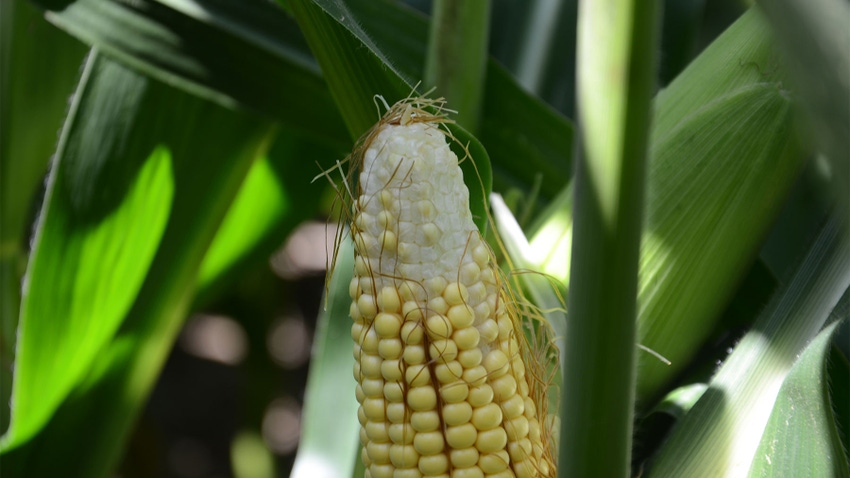
Walking cornfields during grain fill is just as important as scouting earlier in the season, Dave Nanda says. “You will see different things than you saw earlier, and you need to determine if it’s a problem, or just a normal phase corn goes through at that time of year,” says Nanda, director of genetics for Seed Genetics Direct.
“There are lots of things you can learn walking fields during grain fill,” he continues. “Some may help you now, while others may help you do a better job of selecting hybrids for next year’s crop.”
Here are examples:
Dark spots on the stalk and connective tissue with ear. “What you’re likely seeing is pollen that accumulated during pollination and then began decaying,” Nanda says. “It’s perfectly natural.”
Ears tipping outward. “This is what you want,” Nanda says. “You don’t want a hybrid that holds ears close to the stalk too long. When that happens, it favors development of ear rots. You’re better off if ears tip outward or even droop later in the fall for better drying.”
Goosenecking. Is it happening with a plant here and there, or are there several plants in a row? Are plants going to fall over, or do they still have stalk strength? Did you have a major weather event?
“Several things cause stalks to gooseneck,” Nanda says. “Strong winds can do it, and there were plenty this year. Rootworm feeding can also cause it. At any rate, determine the cause so you know if it was a one-year phenomenon, or if you might need to make a management change.”
Ear molds on tips. Nanda pulls back shucks on his scouting trips during grain fill. He wants to determine if ear molds are starting to develop.
“This was a major concern in some areas in ’22, and could be this year in areas stressed by dry weather,” he says. “In 2022, just over half the ears out of 100 in a row were infected in late September in a field we inspected. Fortunately, when it turned super dry again in October, mold progress stalled. What could have been a major threat didn’t materialize for some people.”
Poor pollination vs. aborted kernels. “If we find tipback on ears, it’s usually because weather conditions became more stressful,” Nanda says. “Look to see if ovules were ever fertilized, or if they were fertilized and aborted. You can tell the difference, and it helps reconstruct when things went awry.”
Husk cover. “One thing I check closely is how many husks cover the ear, and how tightly held they are to the ear,” Nanda says. “The tighter the husks, the more likely that hybrid won’t dry down as quickly. Ears with very tight husks are also candidates for more ear molds. I prefer hybrids where husks aren’t as tight.”
Insect or bird feeding on ears. Especially as the crop begins to dry down, you may find damage toward the tip of ears where husk cover isn’t complete. These ears are candidates for feeding by insects and birds, Nanda says.
Read more about:
ScoutingAbout the Author(s)
You May Also Like




